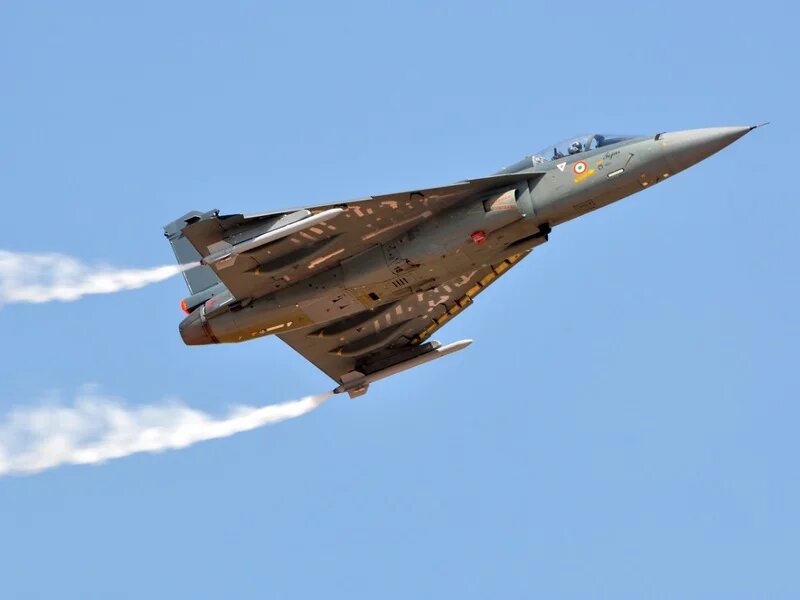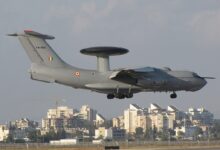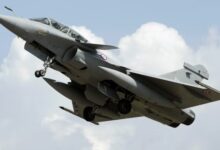Tejas Mk1A Squadron Gears Up for Deployment At Forward Airbase In Early 2024

- The ASTRA missile was made by the Defence Research and Development Laboratory (DRDL), the Research Centre Imarat (RCI), and other DRDO labs.
- Indian Defense Minister Rajnath Singh, along with the Secretary of the Department of Defense (R&D) and the Chairman of DRDO
A press statement from the Ministry of Defense says that the LCA Tejas Mk1A version will make up a new squadron and be sent to the IAF’s forward air bases in early 2024.The Chief of Air Staff (CAS), Air Chief Marshal VR Chaudhari, looked at the state of the Light Combat Aircraft (LCA) program on August 23 at Air Headquarters in New Delhi. This is when these facts came to light. Senior officials from the Ministry of Defense, the Defence Research and Development Organisation (DRDO), Hindustan Aeronautics Limited (HAL), and the Aeronautical Development Agency (ADA) were also there.
The CAS set up the meeting and praised the LCA as the “flag bearer” of the Indian Air Force’s (IAF) efforts to make its aircraft force more “indigenous.” He said, “Because this project is so important to the whole country, it’s important that everyone involved work together to make it a success.” The Make in India and Atmanirbhar Bharat projects of the country were started because of this scheme. More importantly, it shows India’s independence in the aircraft industry.
During the review, it was said that all of the fighter versions of the LCA Mk 1 that the IAF had ordered had been sent to them. Representatives from HAL have told the MoD that the contracted Mk1 twin-seaters will be delivered on time in the coming months. In addition to the LCA Mk 1, the Chairman and Managing Director of HAL, C.B. Ananthakrishnan, promised that deliveries of the 83 LCA Mk-1A planes that were signed for 2021 would start in February of the following year.
Based on these promises, the CAS said that the LCA Mk 1A could be put into a “newly established squadron” at one of the IAF’s operational bases. Even though project delays were talked about during the review, the CAS praised everyone’s work and emphasized how important it is to use what was learned from the LCA program in future indigenous design and development projects. The Ministry says that if the MK1A version is delivered on time, the LCA program will be able to send more planes to forward bases and take part in more foreign exercises.
LCA Tejas tests ASTRA BVR missile off Goa coast
In another development, on August 23, 2023, the ASTRA indigenous Beyond Visual Range (BVR) air-to-air missile was successfully launched from Tejas, the Light Combat Aircraft (LCA), especially from the LSP-7. This took place off the coast of Goa. The rocket was fired from the plane, which was about 20,000 feet above the ground. The test did exactly what it was supposed to do and met all of its goals.
Scientists from the ADA, DRDO, and HAL, as well as people from the Centre for Military Airworthiness and Certification (CEMILAC) and the Directorate General of Aeronautical Quality Assurance (DG-AQA), watched the test launch. A Chase Tejas two-seater plane also flew over the test to make notes in real time.
The ASTRA missile was made by the Defence Research and Development Laboratory (DRDL), the Research Centre Imarat (RCI), and other DRDO labs. Its purpose is to attack and kill supersonic aerial targets that are very maneuverable and move quickly. The successful launch of the homegrown Astra BVR from the homegrown Tejas fighter is a big step toward “Atma Nirbhar Bharat,” as the Ministry said in a press statement.
Indian Defense Minister Rajnath Singh, along with the Secretary of the Department of Defense (R&D) and the Chairman of DRDO, was there for the test and praised the agencies involved for the successful missile launch from Tejas-LCA. He said, “This launch will make Tejas much better at fighting and less reliant on weapons from other countries.”







Facebook Comments